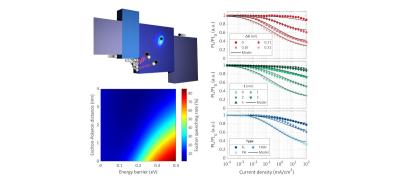Researchers from Seoul National University (SNU), in collaboration from colleagues from Samsung's SAIT institute, have identified a critical mechanism behind the performance degradation of OLED devices, the interfacial exciton-polaron quenching mechanism.
The researches have theoretically proposed a mechanism where excitons in the light-emitting layer are quenched by the accumulated charges at the interface. They followed with with experiments that have independently observed this phenomenon, identifying three key factors: interfacial barrier, exciton-polaron distance, and exciton lifetime.
The team discovered that this phenomenon occurs universally, regardless of the color of the OLED’s emitted light (red, green, or blue), or the type of emission mechanism (phosphorescence, fluorescence and delayed fluorescence, or TADF), making it a decisive factor in the reduction of device efficiency. By controlling this phenomenon, the team achieved an increase in efficiency of over 50% for red, green, and blue phosphorescent OLEDs and extended the lifespan of blue OLEDs by more than 70%.


